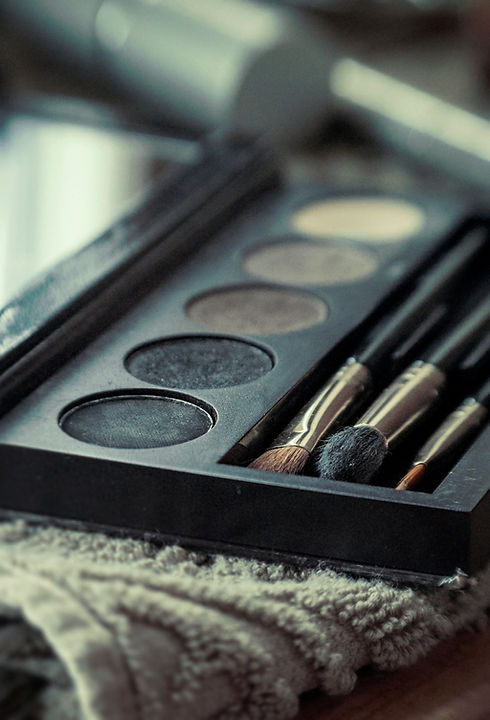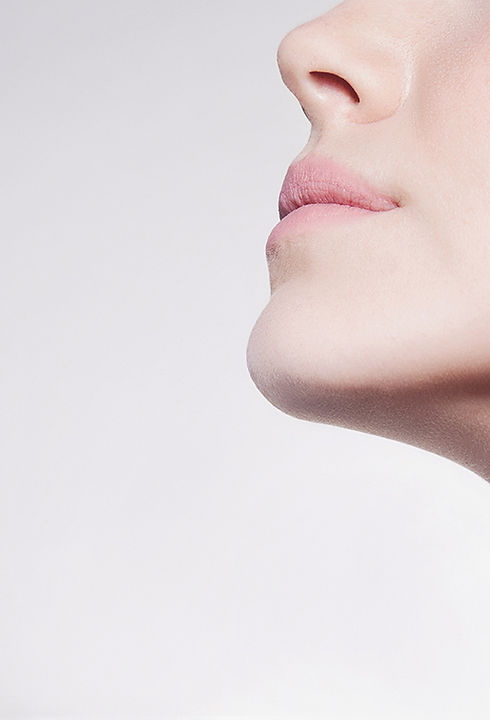The cosmetic industry is forever changing and this history will continue to grow and shape the way we see, use, and buy makeup.
In the Beginning
Archaeologists stumbled on what is considered to be the first signs of makeup in South Africa from around 164,000 BC (Artis, 2017). Before this discovery, it was believed that makeup began in Egypt.
Roughly 12 thousand years ago in ancient Egypt, makeup was used widely on men and women. After an initial rejection of the idea in Europe, the trend of using different plants, clays, metals, and minerals in Egypt to create makeup flourished into Rome with the nobles. It became so popular, women were not considered beautiful if they did not don the concoctions (Artis, 2017; Cosmetic Info, 2017).
During the European Dark Ages, wearing makeup became taboo as prostitutes began using them excessively to embellish their looks and conceal their maturity. Because the high use from prostitutes, kings and queens outlawed use of cosmetics with the exception of stage actors during performances.


The Renaissance Era
With the Renaissance sweeping over Europe, makeup found a strong audience in England and was worn by nobility. Queen Elizabeth I was one strong public figure to don the trends such as thick white powder. While it’s rumored she used white lead and vinegar to cover up scars from a battle of smallpox, wearing white power became a symbol of wealth and royalty.
According to Cosmetic Info (2017), it was also in vogue to wear egg whites over the face during this era to create a “glazed look,” which was another status symbol.
The 17th Century
Around 1600 AD, an infamous power made of lead, belladonna, and arsenic found its way onto the faces of rich women. The female makeup artists that made the poisonous powder, was aware that it could cause death but it was popular she continued to sell it. The powder has been attributed to over 600 fatalities.
During the rest of the Victorian Era (1837-1901), makeup was used sparingly and consisted mostly gentle products such as the juice of beet and lemon (Cosmetic Info, 2017).


The Victorian Era
With progress in chemistry in the 18th and 19th centuries, major growth started to occur in the up and coming cosmetic industry. This Victorian era (1837 -1901) brought the idea of women being ladies. They were expected to have a fragile frame and delicate, beautifully highlighted features. This brought other cosmetics to light such as eye shadow, lipstick, and nail polish (History of Cosmetics, 2017).
It also was during the Victorian era that the trend of men wearing makeup faded. For women, it was considered sinful to wear a full face of makeup so they focused on one cosmetic to achieve an au natural look (Cosmetic Info, 2017). This trend is believed to be the start of “vanity and the feminine associations of homosexuality” (Graham, 2012).
Transition into the 20th Century
At this point, there was still not a solid makeup industry. Products were made by chemist and sold at drug stores or brought to rich clients. With advancements in photography and film in the 20th century, the industries became major players in the development of the modern cosmetic industry. A Polish chemist, Max Factor, began making makeup for film stars once he saw how cosmetics looked on screen. He started to sell his “eyeshadows and brow pencils” outside of the film industry as they were so popular. Soon after he coined the term ‘makeup’ and founded Max Factor.
According to Cosmetic Info, women began to make their own waxed based mascara in the early 1900’s. Chemist T.L. Williams began making mascara for his sister Maybel in 1915 and the brand Maybelline was born. The 1920’s was also when the beauty brand L’Oreal branched out and began making makeup.
According to, Forbes, L’Oreal is the biggest cosmetic brand in the world.


Roaring 20's
With the rise of the roaring twenties, women started to dress up and wear more makeup. It gave women a new sense of feminine power and help them recover after the horrific war (McGlinchey, 2017). Flapper girls wanted black, long eyelashes, red lips, and smokey eyes.
According to Artis (2017), pressed powder first hit the market in the 1920’s. Companies started to create new products for the common person to have at home around this time. Makeup was no longer just a l status symbol.
Young actor, Clark Gable, came on the scene in the 1920’s changing the role of beauty for males. Touting masculine vanity, he wore wear makeup in films and always had his hair perfectly parted and advertisers were quick to notice and the "male specific branding emerged” (A short history of men wearing makeup, n.d.). His movie star predecessors followed his lead and men have been wearing light amounts of makeup and doing their hair for film and photography since.
The 30's
Heading into the 1930’s, Max Factor was becoming a household name and growing in popularity. The decade was kicked off with the release of lip gloss from the brand and women were buying them up. The two products that every women had in their makeup kit at this point was lipstick and mascara (McGlinchey, 2017).
The 1930’s were a tough time for most people because of the depression. The cosmetic industry wasn't horribly affected and women were still wearing makeup looks inspired by Hollywood and movie stars. Looks weren't as dramatic as they were in the roaring twenties due to the fact that most people didn't have enough money to spend on multiple high-end products (Knowles, 2017).
The lack of universal consumer protection within the cosmetic drug industry prior to the 1930’s was non-existent. The change to protect the consumer against poisonous products was influenced by women activist and government officials in the progressive era which expanded their domestic sphere of influence to the communal level. It brought a new relationship between the cosmetic industry and their consumers. (Kay, 2005)


The 40's
In the early 1940’s, women were entering workforce, typically working unfeminine jobs in a factory setting. Women were in need of on-the-go products. Compacts began to come into the picture. Many women who couldn't afford a compact used their lipstick to contour their faces and color their lips (McGlinchey, 2017).
Lipstick was still a huge product and continued to grow rapidly. Women were encouraged to purchase in bulk so that they could always send letters covered in lipstick kisses to their soldiers who were away at war. The thought was, it would make the soldiers feel better while they were away. The industry was starting to become large and more well-known with more cosmetic brands developing.
“The big selling makeup brands were Max Factor, Revlon, Helena Rubinstein, Elizabeth Arden and Estee Lauder. Other brands include Gala, Bourjois, Yardley, Coty and Rimmel” (Hair and Makeup Artist, 2017).
The 50's
The 1950’s was an exciting time for cosmetic brands because the first use of “influencers” were seen. Female movie stars and women in Hollywood were used as the “face” of different cosmetic brands. The women were always popular, beautiful, and liked. Still to this day, cosmetic brands use this technique to attract more women (McGlinchey, 2017).


The 60's
In the 1960’s, industry leaders Revlon and Max Factor pushed advertisements with young girls with bouffants, vivid eyeshadows, and perfect pink lips. Babydoll lashes, made popular by model Twiggy, were all the rage and cosmetic brands started making false lashes modeled after the trend (Oliver, 2015).
The 70's
During the 1970’s, women began to believe makeup sexualized their image and it was seen as a waste of time to apply. The industry reacted and started to market their products as more natural, telling women to find beauty from within. Women were still purchasing makeup, just aiming for a more simple look than in previous decades.
Women in advertisements began to be portrayed as independent, strong, and smart. The seventies was also a huge time for the cosmetic industry because makeup brands started to create shades and colors for African American women (Women’s 1970’s Makeup, 2013).


The 80's
The 1980’s saw men wearing thick painted faces and eyeliner. As part of their brand, musicians wanted to separate themselves from one another and add drama to their look; makeup was their answer (21 Rock and Metal Act, 2011). Famous musicians from Boy George to Twisted Sister would always be made up before public appearances. This is when stage makeup for men began to be socially acceptable.
Entering into the 1980’s, there was a huge flip in the way women did their makeup. They no longer went for the natural, dewy glow; they wanted to wear a full face of makeup with brighter colors. To make the eyeshadow, blush, and lipstick pop, women would wear foundation two shades lighter. Blush was applied into the hollows of the cheek and a light sparkly powder was sometimes applied to the highest point on the cheek bone, which is now known as contouring. Blending wasn’t seen as important as colors were to be very vibrant and sharp
(justmakeupartists.com, 2017).
The 90's
The 1990's were a tough time for the industry because more people were becoming educated on the fact that products were being tested on animals. Various animal rights bills were being looked at and considered to limit the amount of testing happening on animals. Back then, the Chemical Manufacturers Association (CMA), which is now known as the American Chemistry Council (ACC), fought to diffuse any efforts towards animal activism. In essence, they believed that animal testing was not dangerous, and to make everyone happy they said they would look into other ways to test products.
Most efforts to end animal testing have not been successful and companies are still even practicing this today (PRwatch.org, 2017). Despite this, the cosmetic industry still continues to grow.


The 2000's and Today
Today, the cosmetic market is the largest in the United States and earned roughly 62 billion in 2016. The industry is projected to grow 3% per year by 2018 (Market Research, 2017). With so many new products, brands, and trends, the industry has been able to adapt and keep up with women around the world. There are so many different choices that range from affordable to high end that makeup can be used and accessed by everyone.

History in the United States
A brief history of the cosmetic industry within the United States.


